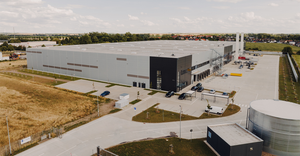Recycling Markets Stumbling in Our Shapeshifting Economy
$169.75 per ton. That was the average value of northeastern MRF recyclables this Spring. When the Northeast Recycling Council started reporting the average value, in the second quarter of 2019, it was only $45.13 a ton. Then it went down $10 a ton, plodded along for a year and took off. In the third quarter of 2021, the value peaked at $175.95. NERC’s 2022 third quarter report will definitely be lower.
No one should be surprised at the up and down prices for our recyclables. After all, they are commodities subject to the economy’s ups and downs. Unlike recycling markets, the current economy is doing both at the same time. The Washington Post recently described it as “shape-shifting” because economic data is so contradictory. In August, eight days after we learned we had two consecutive quarters of declining economic growth (which is the definition of a recession), employment data showed tremendous job growth. We were back to pre-COVID levels. Housing starts are down, construction jobs are up and inflation is an inescapable reality. What is going on?
Recycling markets began reacting to economic news in mid-May when plastic and metal recycling markets started to soften. They slid more in June and July. So far in August, several plastic markets, including PET, have continued to slide. Fortunately, paper recycling markets were solid throughout the second quarter and in July. Unfortunately, both old corrugated container (OCC) and residential mixed paper (RMP) markets went down in the first week of August. They are the mainstays of curbside recycling programs. Their strength in the second half of the second quarter buoyed the average value.
The NERC report is a “lagging” economic indicator. It reports on what has happened but does not predict what can happen. Recycling markets, however, can sometimes be leading indicators of where the economy is going, or at least where purchasing agents think it’s going. Manufacturers who see the prospect of increased sales need more raw materials and more packages to ship their products in. The reverse happens when lower sales are forecast.
We experienced this up and down in the first half of this year. PET hit a high of 40.64 cents a pound in May (all national price data in this column are from RecyclingMarkets.net). Its price always goes up in the spring as beverage companies place their raw material orders for all the soda and water bottles they intend to sell in the summer. Their orders go down in advance of the temperature cooling off. Those companies may also have been scrambling to meet their recycled content goals for this year. Nonetheless, the price was unsustainable.
Seasonal demand isn’t the only thing depressing PET markets. Fiber companies who use old PET bottles to make carpets and other products cut back on their buying. They were anticipating a sales decline in a weak economy. As a result, MRF warehouses began filling with empty bottles. Because MRFs don’t have much storage space, they have to empty them out. Sellers had no choice but to accept lower prices. PET prices dropped to 14 cents at the end of July and then to 10.31 cents in the first week of August. That’s a drop of 30.33 cents in three months.
As for paper, its recent softness no doubt reflects uncertainty about where the economy is going. Export markets are soft, mill inventories are high and they are taking downtime. When the index of manufacturing activity hits the same low as two years ago and when leading big box retailers such as Target and Walmart declare they have too much unsold inventory, who needs more new boxes? Mixed paper is especially vulnerable because its quality is not as consistent as OCC’s. Both went down in early August, with the mixed paper price almost cut in half.Yet in both cases, the latest national averages ($114.06 for OCC and $44.06 for RMP) are well within the normal range. Better yet for curbside recyclers, the paper decline is considerably less on a percentage basis than PET’s.
Inflation seems to have put the brakes on the drive for plastic recycling content. For instance, natural HDPE bottles saw their value skyrocket last year. Brands making non-food contact consumer products such as shampoo or detergent find the translucent natural bottles easy to work with for their colored bottles. Last year’s high of $1.08 per pound is now down to 45.5 cents a pound. Buyers may have decided that higher prices only added to inflationary pressure on their products.
All of this will pass. Prices are likely to remain soft for the remainder of the year and improve next year. Recycling markets sometimes resemble elevators and sometimes they are more like moving sidewalks. The latter is what we want, so long as it is at a reasonable altitude.
About the Author
You May Also Like




